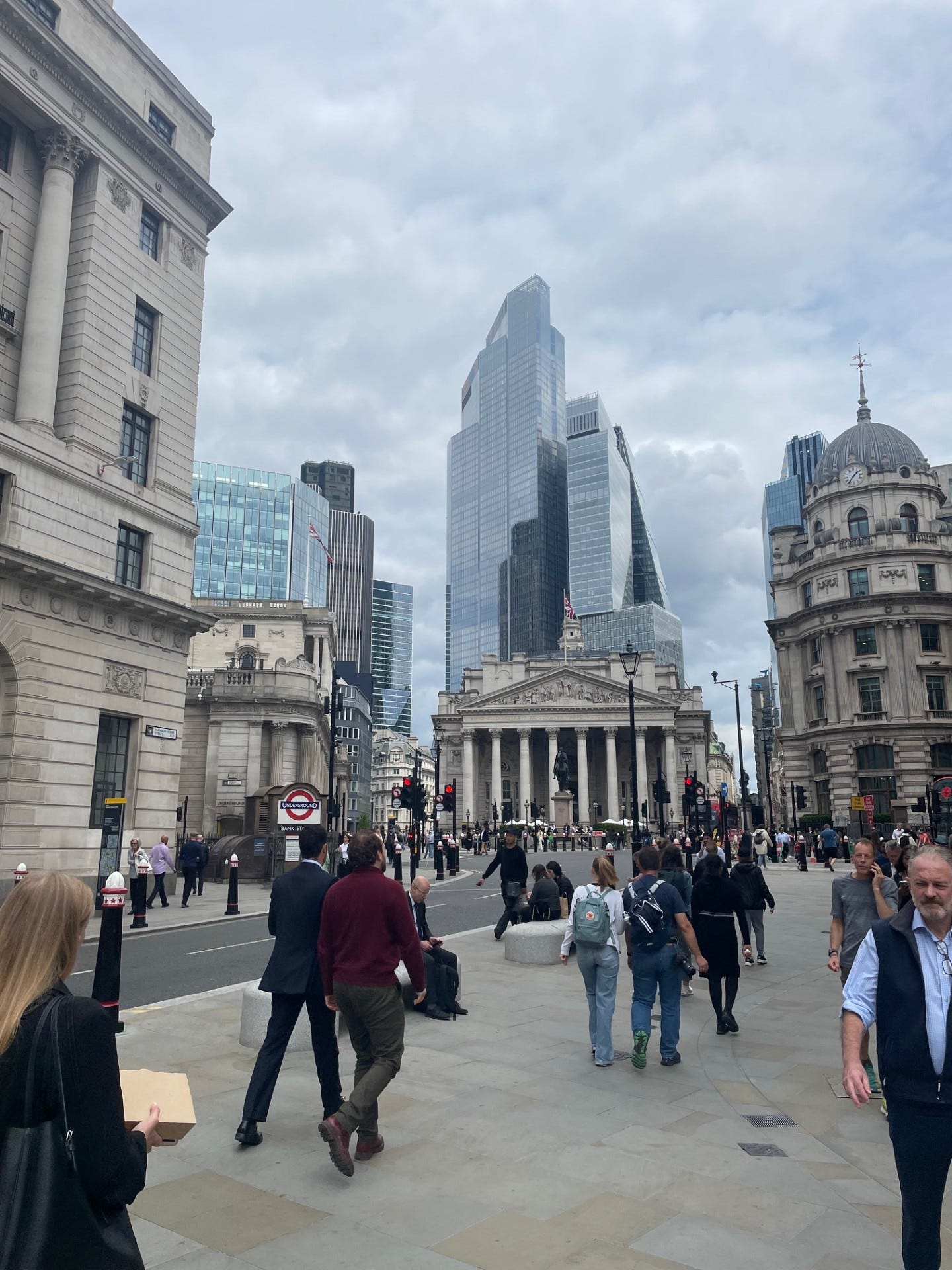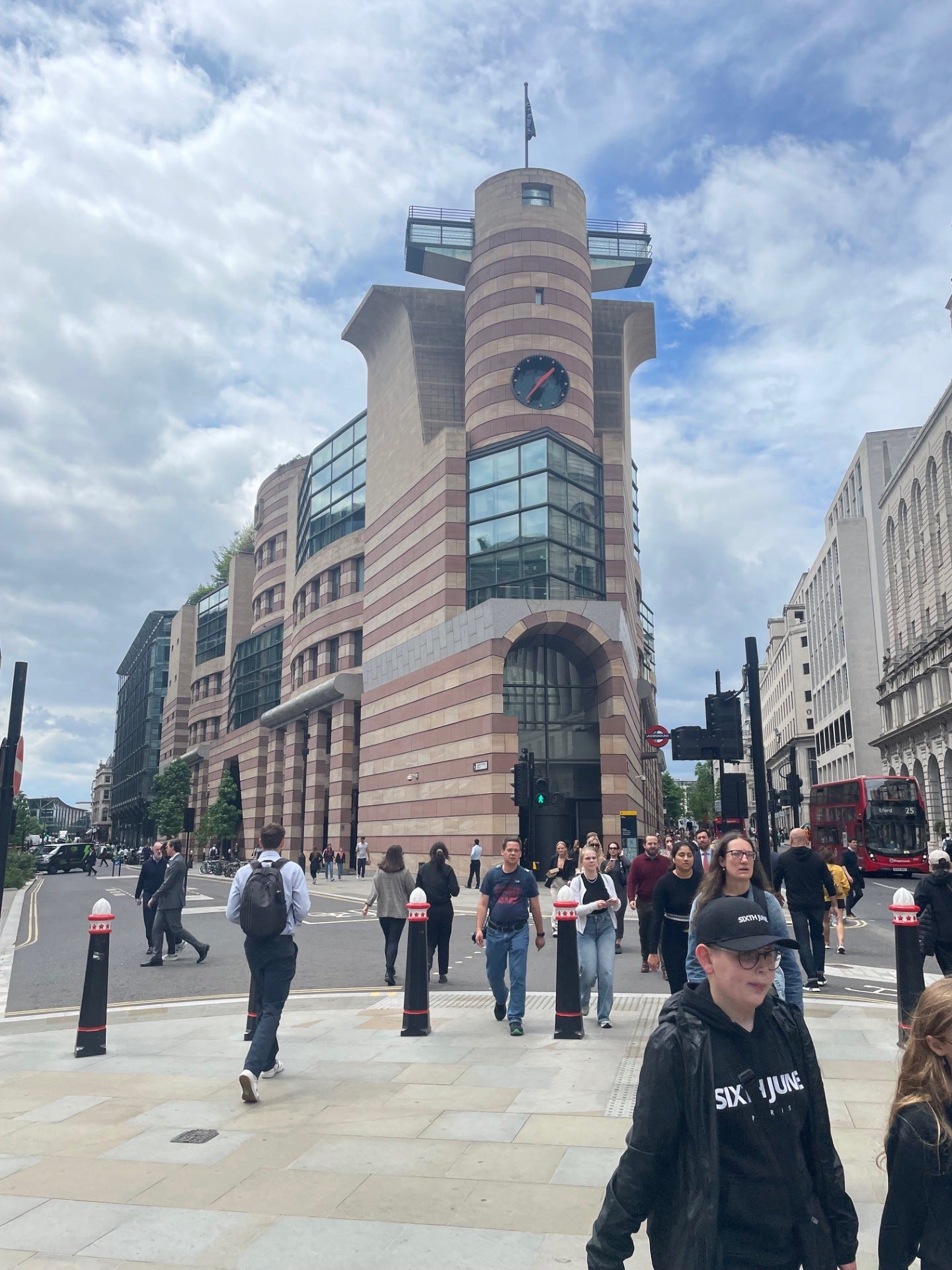Jon Anderson says that we can think of places as texts. We can read places. We can look carefully at a place and try to interpret what it is telling us. It might tell us who made the place – both in the sense of designers who created intentional traces and the users of a place who unintentionally leave their own mark through their participation in a kind of place ballet. Whose traces dominate a place can help us understand who in that society has the most power. However, just as two people can read the same novel and interpret the characters’ motivations differently, so two people can read a place differently.
But it’s also possible to misread a landscape altogether. Just as some A-Level English students miss the symbolism in The Great Gatsby – thinking it’s a romantic tale of lost love rather than a critique of the American Dream – we can miss what a landscape is really trying to say. I realised I had partly done this with the Bank of England.
I thought of this over half term while enjoying some flânerie in the City of London. The Bank of England is a grand old building. Established in 1694, I had assumed – based on what I saw – that the building itself dated from a similar, perhaps slightly later, period. I imagined a 17th-century Londoner gazing up in awe at this imposing structure, convinced of the power and prestige of an institution capable of creating something so monumental at a time when most London buildings were still modest and wooden.
But I was wrong. The Bank didn’t move to its current site until 1734. And it was only in 1833, after riots during which missiles were hurled at the building, that the famous 2.5m external wall was constructed. Yet today, that wall is the only surviving part from that period. The rest of the Bank’s buildings were demolished in the 1920s to make way for what we see today.
I misread these 1920s buildings as being much older. But that misreading is itself revealing. The Bank’s architect deliberately designed them to look older. The Bank’s own historians describe the building as “steeped in symbolism” and note that “its neoclassical style also makes it appear older than it actually is”. The architecture is intentionally deceptive – inviting us to read the landscape as evidence of long-standing, unshakable authority. It signals that the Bank has been here for hundreds of years and will remain for hundreds more. Stability, trust, continuity – all written into the stone.
As I was droning on about how the Bank’s size and scale were symbolic of its power over the city and its financial system, one of my young geographers interrupted: “I think the power of the Bank of England has been trumped.” He pointed to the right – and there, looming over the Royal Exchange and the Bank itself, stood the (imaginatively named) skyscrapers 22 Bishopsgate and 8 Bishopsgate. These buildings, too, serve to project power – in this case, not for the state, but for the private capital that owns and occupies them. Investment funds, insurance giants, consultancies and banks now assert their presence on the skyline.
Turning 180 degrees, we then come face to face with No. 1 Poultry – a building with very different symbolism, but one that’s useful for A-Level geographers wrestling with the slippery concept of the Postmodern Western City.
Designed by James Stirling and completed in 1997, No. 1 Poultry is described by Stuart Jeffries in his excellent book Everything, All the Time, Everywhere as “Britain’s leading postmodern building”. Jeffries draws on the American cultural theorist Charles Jencks to explain why it’s such a fitting icon for postmodern London. Jencks argued that London – shaped by migration, wealth, and global flows – had become “a treasure house of architectural styles to be quoted and appropriated”. It wasn’t a city that could be built in one style – it was too old, too diverse, too contradictory for tidy architectural solutions.
London needed an architecture that was as multicultural and mismatched as the city itself. As Jencks described No. 1 Poultry:
it has a glazed two-sided clock that quotes the fascist-era Palazzo delle Poste in Naples, and is surmounted by a turret that looks like a submarine conning tower, as if the building has surfaced through all the archaeological layers of London below. Inside, it has a ramped floor conveying an Ancient Egyptian mood, while its main staircase quotes the Vatican’s Renaissance Scala Regia.
His use of the word ‘quotes’ feels particularly apt. We started with Anderson’s idea that places can be ‘read’. If places can be read then they can also be quoted.
Reading places is not easy – sometimes we’ll get it wrong, or only partially right. But even our misreadings can tell us something valuable. They can reveal our own assumptions about the world. And often, we’ll be closer to the truth than we think. The key is to stay curious, look closely, and keep reading. There’s always something a place is trying to say.






